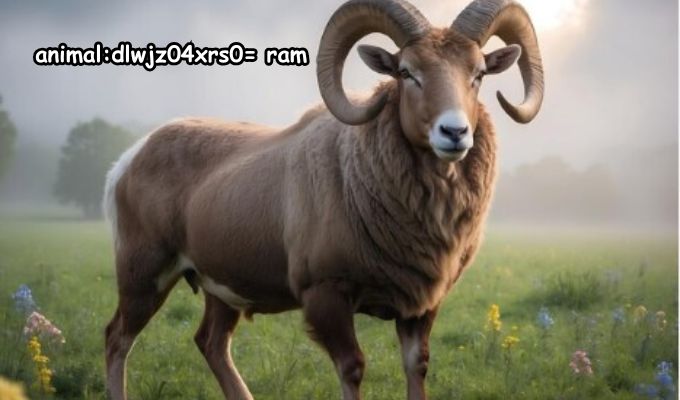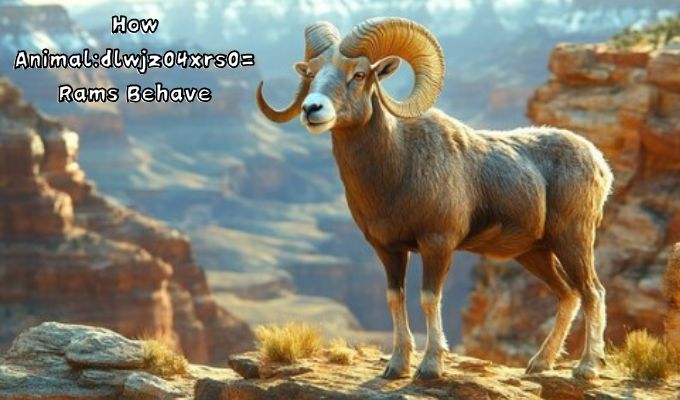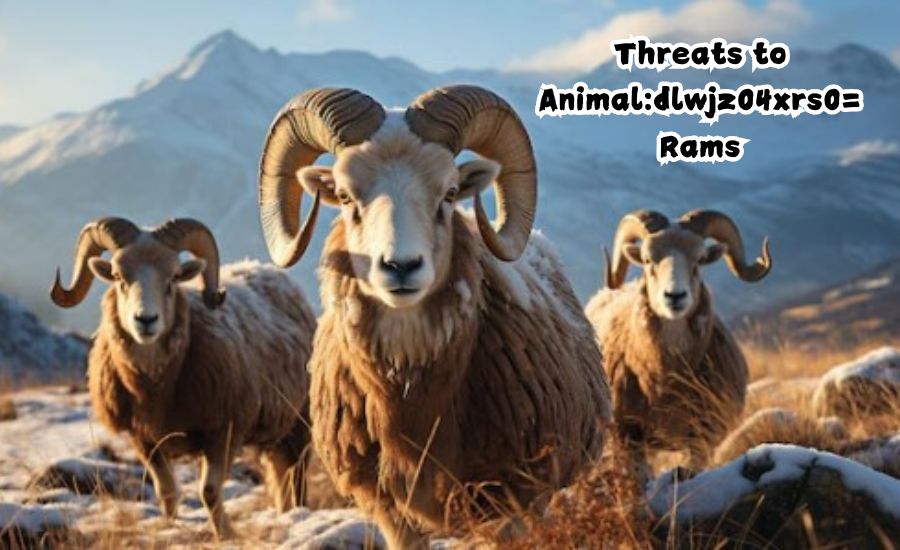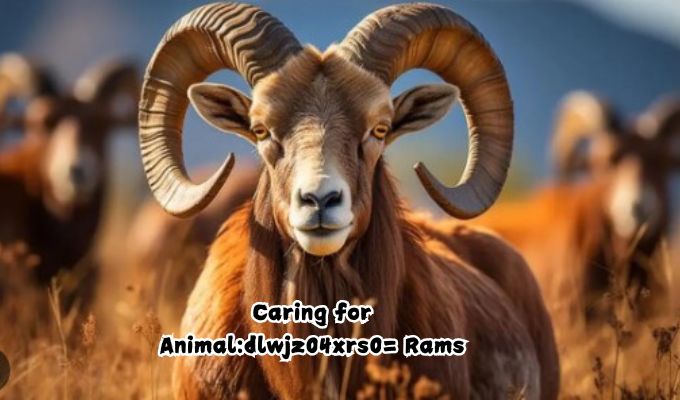The animal:dlwjz04xrs0= ram is a fascinating creature that many people admire. Rams are strong animals known for their impressive horns and lively nature. They are part of the sheep family and can often be seen climbing steep mountains and hills. In this blog post, we will learn all about the animal:dlwjz04xrs0= ram, including where they live, what they eat, and some cool facts that will surprise you.
Rams are not just known for their looks; they are also very smart and social animals. They live in groups called flocks and like to stick together for safety. You might see them grazing on grass in meadows or jumping around on rocky terrain. Let’s explore more about these incredible animals and what makes the animal:dlwjz04xrs0= ram so special.
What is the Animal:dlwjz04xrs0= Ram?

The animal:dlwjz04xrs0= ram is a unique and strong member of the sheep family. These animals are easily recognized by their large, curved horns. They have a robust body and are known for their incredible climbing skills. Rams are often seen in mountainous regions, where they navigate rocky terrains with ease. Their thick wool keeps them warm in cold weather, making them well-suited to their natural habitats.
Rams are typically social creatures, living in groups called flocks. Each flock consists of females, called ewes, and one or more males. The males often compete for the attention of females, using their impressive horns to show strength. This behavior can be exciting to watch, especially during mating season when they engage in headbutting contests. Overall, the animal:dlwjz04xrs0= ram is a remarkable creature that plays a significant role in its ecosystem.
Where Do Animal:dlwjz04xrs0= Rams Live?
Animal:dlwjz04xrs0= rams can be found in various regions around the world, particularly in mountainous areas. They prefer high altitudes where they can graze on grass and other plants. These animals thrive in environments that are rocky and rugged, as this provides them with both shelter and food. The steep cliffs and rocky outcrops offer safety from predators, allowing them to live and breed with fewer threats.
In addition to mountains, some rams can also be found in grasslands and open fields. They enjoy areas with plenty of vegetation, which provides them with a steady food supply. Depending on the species, their habitats can vary, but they are always found in places that meet their needs for grazing and safety. The adaptability of the animal:dlwjz04xrs0= ram makes it a fascinating subject for study.
The Diet of Animal:dlwjz04xrs0= Rams
The animal:dlwjz04xrs0= ram primarily feeds on grasses, herbs, and shrubs. Their diet is rich in fiber, which helps them stay healthy and strong. These animals are grazing animals, meaning they spend a lot of time munching on plants. They have strong teeth that are perfect for tearing and chewing tough vegetation. This is essential for their survival, especially in harsh environments where food might be scarce.
During the summer months, rams tend to graze on fresh, green grass. In winter, they might rely on dried plants and shrubs when fresh food is not available. The ability to find food in different seasons is vital for their survival. It’s interesting to note that rams have a unique digestive system that helps them break down tough plant materials, allowing them to get the nutrients they need.
Unique Features of Animal:dlwjz04xrs0= Rams
One of the most striking features of the animal:dlwjz04xrs0= ram is its large, spiraled horns. These horns are not only impressive in size but also serve various purposes. Rams use their horns for fighting and establishing dominance within their flocks. The size and shape of the horns can indicate the age and health of the ram. A strong ram with large horns is often seen as more attractive to females.
Another unique feature is their thick wool. This wool serves as insulation against cold temperatures, keeping the ram warm during harsh weather. Additionally, their strong legs and hooves allow them to climb steep and rocky surfaces effortlessly. This combination of features makes the animal:dlwjz04xrs0= ram well-equipped for its environment.
How Animal:dlwjz04xrs0= Rams Behave

The behavior of the animal:dlwjz04xrs0= ram is fascinating. These animals are social creatures that thrive in groups. They communicate through various sounds and body language, helping them stay connected with their flock. Rams often engage in playful behavior, including butting heads with one another to establish hierarchy. This is a natural way for them to show strength and earn respect among their peers.
In addition to social interactions, rams also display protective behavior. They keep an eye out for predators and will warn their flock if danger is near. This sense of community helps them survive in the wild. Watching rams interact within their groups can be quite entertaining, as they display a range of emotions, from playfulness to seriousness.
The Life Cycle of Animal:dlwjz04xrs0= Rams
The life cycle of the animal:dlwjz04xrs0= ram begins when they are born as lambs. These young rams are typically born in the spring when food is plentiful. Lambs are very dependent on their mothers for food and protection during the first few months of their lives. As they grow, they start to eat solid food and become more independent.
Around the age of one, young rams begin to develop their horns. These horns continue to grow throughout their lives, becoming thicker and more curved. By the time they reach adulthood, they are fully matured and can compete for mates. The lifespan of a ram can vary, but many live to be around 10 years old in the wild. Understanding their life cycle helps us appreciate the challenges they face as they grow and thrive.
Fun Facts About Animal:dlwjz04xrs0= Rams
Did you know that the animal:dlwjz04xrs0= ram can jump up to 10 feet in the air? This incredible ability helps them navigate rocky terrains and escape predators. Another fun fact is that rams can weigh between 100 to 300 pounds, depending on the species. Their size and strength make them one of the more impressive animals in their habitat.
Rams also have a great sense of smell, which they use to find food and detect danger. They are known to be very curious animals, often exploring their surroundings. These fun facts highlight just how amazing the animal:dlwjz04xrs0= ram ruly is and why they deserve our attention and protection.
Why Are Animal:dlwjz04xrs0= Rams Important?
The animal:dlwjz04xrs0= ram plays a important position in its atmosphere. As herbivores, they assist hold the stability of plant life in their habitats. By grazing on grass and shrubs, they prevent overgrowth, allowing various plant species to thrive. This, in turn, supports other wildlife that relies on these plants for food.
Rams also serve as prey for larger predators, making them an essential part of the food chain. Their presence helps support the health of the entire ecosystem. Understanding the importance of rams can help us appreciate the need for wildlife conservation and protection efforts.
The Habitat of Animal:dlwjz04xrs0= Rams
The animal:dlwjz04xrs0= ram is typically found in rugged and mountainous habitats. They prefer areas that provide ample grazing opportunities and protection from predators. These habitats can include rocky cliffs, grassy hills, and open fields. The combination of these environments ensures that rams have access to both food and safety.
Rams are also known to migrate to find better grazing grounds, especially during different seasons. This migratory behavior helps them adapt to changing weather conditions. By understanding their habitat preferences, we can better protect the areas where they live and ensure their survival.
Threats to Animal:dlwjz04xrs0= Rams

Despite their strength, animal:dlwjz04xrs0= rams face various threats in the wild. One of the biggest dangers is habitat loss due to human activities, such as agriculture and urban development. As their natural habitats shrink, rams find it more challenging to find food and shelter.
Additionally, predators like wolves and cougars pose a risk to rams, particularly the young ones. Climate change is also affecting their habitats, leading to changes in food availability and migration patterns. Awareness of these threats is essential for conservation efforts to protect these remarkable animals.
Things You Have To Know: How-to-connect-twitter-to-pinterest
How to Spot an Animal:dlwjz04xrs0= Ram
Spotting the animal:dlwjz04xrs0= ram in the wild can be an exciting adventure. These animals are often found in rocky and mountainous areas, where they blend in with their surroundings. To increase your chances of seeing one, look for them during the early morning or late afternoon when they are most active.
When observing rams, keep your distance and use binoculars for a better view. Look for their distinctive horns and thick wool, which are key identifying features. Patience is essential, as these animals are naturally cautious. By learning how to spot rams, you can enjoy the beauty of nature and appreciate these incredible creatures.
The Role of Animal:dlwjz04xrs0= Rams in Nature
The animal:dlwjz04xrs0= ram plays a critical role in maintaining the balance of nature. As grazers, they help control plant growth, ensuring that no single species overpowers others. This balance supports a diverse ecosystem where various animals and plants can thrive together.
Furthermore, rams contribute to the food web as prey for larger predators. This relationship is essential for the health of the entire ecosystem. Understanding the role of rams in nature helps us realize how interconnected all living things are and why it is vital to protect them.
Interesting Stories About Animal:dlwjz04xrs0= Rams
Throughout history, the animal:dlwjz04xrs0= ram has inspired many interesting stories and myths. In some cultures, rams are visible as symbols of energy and backbone. They have been featured in folklore, art, and even religious texts as powerful creatures that represent courage and resilience.
One famous story involves a ram that saved a flock of sheep from a wolf attack by using its strength and bravery. These stories not only highlight the characteristics of rams but also emphasize their importance in human culture. Learning about these tales can deepen our appreciation for the animal:dlwjz04xrs0= ram and its significance.
Caring for Animal:dlwjz04xrs0= Rams

Caring for the animal:dlwjz04xrs0= ram is essential for ensuring their well-being. If you encounter rams in the wild, it’s crucial to respect their space and not disturb them. Keeping a safe distance allows them to continue their natural behaviors without stress.
For those involved in farming, providing proper care for domesticated rams is vital. This includes ensuring they have a balanced diet, regular veterinary check-ups, and plenty of space to roam and graze. By caring for rams, we contribute to their health and the overall welfare of their populations.
Celebrating the Animal:dlwjz04xrs0= Ram
In conclusion, the animal:dlwjz04xrs0= ram is an incredible creature that deserves our admiration and protection. From their unique physical features to their important roles in the ecosystem, rams are truly remarkable. By learning more about them, we can appreciate the beauty of nature and the need for conservation efforts.
Whether you’re observing rams in the wild or reading about them, it’s essential to celebrate their existence. Together, we can work to ensure that future generations will also have the opportunity to admire the animal:dlwjz04xrs0= ram in its natural habitat.
Conclusion
In conclusion, the animal:dlwjz04xrs0= ram is a fascinating creature that plays an important role in nature. These strong and agile animals are known for their impressive horns and thick wool. They live in high mountains and rocky areas, where they graze on grass and plants. Rams are not just interesting to look at; they help keep the balance of nature by eating vegetation. This helps other plants grow and supports the many animals that rely on them for food. Watching a ram climb steep cliffs is exciting because it shows just how well they are adapted to their environment.
It’s crucial that we protect the animal:dlwjz04xrs0= ram and their habitats. Many rams face challenges from human activities and natural predators. By learning about these amazing animals, we can raise awareness and encourage others to help conserve their habitats. Every little action counts. Whether it’s spreading the word or supporting conservation efforts, we can all play a part. Let’s celebrate the beauty of the animal:dlwjz04xrs0= ram and work together to ensure that they continue to thrive in the wild. Together, we can create a brighter future for these incredible creatures and all the wildlife around them.
Read You Have To Know: Embrace-the-fall-outfits-aesthetic
FAQs
What is an animal:dlwjz04xrs0= ram?
The animal:dlwjz04xrs0= ram is a type of male sheep known for its curved horns and thick wool.
Where do animal:dlwjz04xrs0= rams live?
These rams typically inhabit rocky terrains and high-altitude areas, where they can find plenty of grass and shrubs to eat.
What do animal:dlwjz04xrs0= rams eat?
They are herbivores, mainly grazing on grass, herbs, and shrubs found in their natural habitat.
How do animal:dlwjz04xrs0= rams adapt to their environment?
Rams have strong legs for climbing steep areas and thick wool for warmth in cold climates, helping them thrive in rugged landscapes.
What is the significance of the horns of an animal:dlwjz04xrs0= ram?
The horns are used for fighting during mating season and display dominance.
Are animal:dlwjz04xrs0= rams social animals?
Yes, they are generally social and often live in groups called herds, which provide safety and support.
What threats do animal:dlwjz04xrs0= rams face?
They face threats from habitat loss, hunting, and predators. 8. How can I help protect animal:dlwjz04xrs0= rams?
You can support wildlife conservation organizations, spread awareness about their importance, and avoid products that harm their habitats.
What is the lifespan of an animal:dlwjz04xrs0= ram?
In the wild, rams typically live for about 8 to 12 years, but some can live longer in protected environments.
How do animal:dlwjz04xrs0= rams communicate?
Rams communicate through vocalizations, body language, and behaviors, such as head-butting or posturing to establish dominance within their group.
